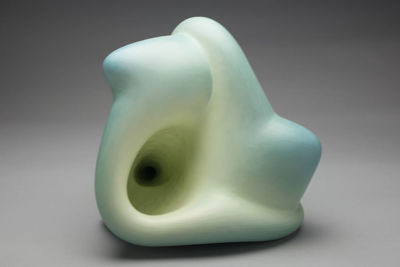Ayumi Shigematsu
Shigematsu Ayumi belongs to the second wave of postwar female ceramists who received a college education in the arts. Common themes shared by this generation of women artists are allegorical representations of female sexuality and works that draw on the beauty of nature. All of Shigematsu's works pose tensions between the external and internal as forms are turned inside out, revealing fluidly interconnected surfaces. Shapes are discovered subconsciously by the artist as they evolve from clay coiling and hand-pinching. After a basic form is "found," Shigematsu brushes an original mixture of differently colored slip made with various pigments upon her clay surfaces. (She does not use traditional glazes.) Before a work is left to dry, the artist polishes its entire surface with a carefully selected stone, and then quickly fires the object at a relatively low temperature to retain the moist, milky textures that are her trademark.
Sort by
Display per page
Title: Untitled
Artist: Ayumi Shigematsu
Shigematsu’s biomorphic ceramics explore loose naturalistic confines and a slow parabolic conversation with female sexuality; reoccurring themes from the second wave of post-war Japanese ceramicists. Base shapes are revealed through a semi-conscious working, coiling and pinching of the clay, and the soft amorphous gradients are added through layers of polished clay slip rather than a traditional glaze. This untitled piece suggests a soft movement — two dorsal territories colliding and absorbing one another, whilst a central void adds depth and dynamic presence.


